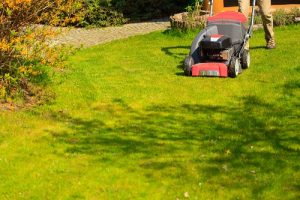 Taking care of your lawn doesn’t have to be complicated. It might sound like a lot of work, but it’s not really that tricky. You’ll need to put in some effort, but it’s worth it. Alternatively, you could hire some pros to handle it for you, but if you want to do it yourself, here are some easy lawn care steps to follow:
Taking care of your lawn doesn’t have to be complicated. It might sound like a lot of work, but it’s not really that tricky. You’ll need to put in some effort, but it’s worth it. Alternatively, you could hire some pros to handle it for you, but if you want to do it yourself, here are some easy lawn care steps to follow:
Lawn Care Tips
1. Soil Preparation
Start with the soil. It’s where your grass will grow, so it’s important. When you’re planting new grass, mix in some natural compost about two or three inches deep. This gives your grass all the nutrients it needs to grow well. Don’t use chemical fertilizers – go for manure-based compost instead. It’s much better for your lawn.












